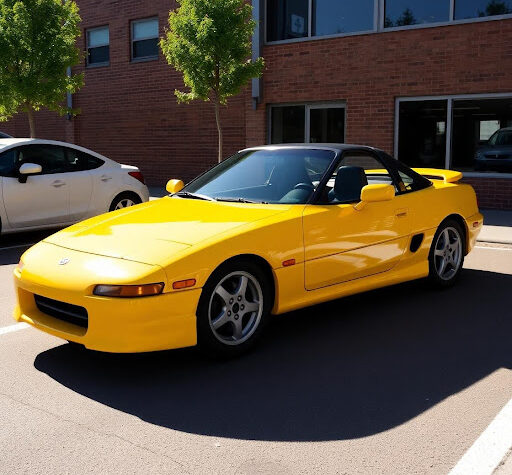
During the depths of the recession, Missouri’s automotive industry was on the ropes. Once-thriving plants had closed, workers had been laid off, and thousands of jobs had been sent overseas. Many analysts predicted that this trend would continue and that it wouldn’t be long before the last Missouri-made vehicle rolled off the line. But in 2009, newly-elected Governor Jay Nixon had a plan to bring this industry – and the thousands of jobs it supported – back to life.
Through the concerted efforts of state, labor and industry leaders, the State of Missouri is seeing a strong resurgence in the automotive industry, led by historic expansions by Ford and General Motors and automotive suppliers around the state.
Missouri has always enjoyed a proud history in the automotive industry, dating back to 1897, when the St. Louis Gasoline Engine Company manufactured some of the first gas engines. When the U.S. economy slipped in the mid 2000s, so did Missouri’s auto sector. The global decline in auto sales forced the closure of Ford’s Hazelwood plant and both Chrysler’s North and South Assembly plants. Additionally, General Motors’ Wentzville plant discontinued its second shift. From 2004 to 2009, employment in Missouri’s auto manufacturing sector declined by 35 percent.
Recognizing the importance of the automotive industry to the long-term economic well-being of the state, Governor Jay Nixon, on his first full day in office, issued an executive order establishing an 18-person Missouri Automotive Jobs Task Force to develop a plan to bring the state’s automotive sector back to life. The taskforce, comprised of a diverse group of industry experts found that Missouri offered unique advantages for automotive manufacturers: a skilled workforce, a central location, low taxes and excellent transportation assets. And in September 2009, the taskforce submitted their detailed recommendations for jump-starting automotive industry investment in the state.
With the taskforce’s report in hand, Governor Nixon and his economic development team worked closely with leadership at Ford and GM, including travelling to Detroit for meetings with CEOs Alan Mulally and Dan Akerson, to develop a plan that would keep these industry giants in Missouri for generations to come. The Governor also worked to make government smaller, smarter and more efficient – holding the line on taxes while making strategic investments in education and workforce training.
In June 2010, Governor Nixon called a special session of the Missouri General Assembly to enact the Missouri Manufacturing Jobs Act, a landmark package of targeted economic incentives credited with bringing Missouri’s automotive manufacturing industry back from the brink and laying the groundwork for the significant expansions now underway.
Today, automotive manufacturers and suppliers are making major investments in the Show-Me State, as this important industry continues to roar back to life. Ford is making $1.1 billion investment in its Kansas City Assembly Plant to build the all-new Transit van. The company also recently announced a third production crew of the Ford F-150, the most popular pick-up truck in the world. The expansion, which is creating more than 2,000 new jobs in the region, includes upgrades to the facility’s body shop, paint shop and final assembly, as well as construction of a new, integrated stamping plant.
On the other side of the state near St. Louis, General Motors is adding 1,600 jobs and investing $380 million to bring production of the newly redesigned Colorado pickup to its Wentzville plant and to support demand for its existing vehicles. In June, GM announced an additional $133 million investment at the facility to add a third stamping press.
Missouri’s growing automotive industry has helped spark a parallel resurgence by automotive suppliers across the state. In May, Yanfeng USA Automotive Trim Systems, an industry leader in interior component supplies, announced plans for a $45 million facility that will create 263 new jobs in Riverside. Last year, LMV Automotive Systems, a division of industry giant Magna, broke ground on a facility in Liberty to build parts for the Transit van. And Adrian Steel is constructing a new manufacturing facility in Kansas City to support Ford’s Claycomo Plant. These announcements followed expansions last year by suppliers including TG Missouri, Henniges Automotive, Bodine Aluminum and Spartan Light Metal Products.
Governor Nixon and his economic development team have continued to focus on the automotive sector with training programs and incentives specifically designed to strengthen Missouri’s automotive supplier network. In July, Governor Nixon signed into law the Missouri Works initiative, which consolidates the state’s existing business development incentives into a single, business-friendly program with a uniform set of definitions and a streamlined application process to cut through red tape. The Governor also signed into law legislation lowering the tax burden for Missouri manufacturers by allowing companies to elect a new single-factor apportionment option to calculate their corporate income tax.
Automotive Industries spoke to Jay Nixon, Governor of Missouri.
AI: What were the challenges you faced when you first took office that drove you to set up the Automotive Jobs Task Force?
A generation ago, a job at the local auto plant was more than just a job – it was a lifelong career, an opportunity to achieve the American dream. And parents were confident their children could achieve that dream as well.
When I took office, that job security at the local plant didn’t exist anymore. Too many American auto jobs had moved overseas, too many plants had closed and the global recession accelerated the decline. But while the economic crisis worsened and sales slowed, we always had faith that this industry would recover. The vehicles of the future had to be built somewhere. It was up to us to make sure they were built here in Missouri – and by rolling up our sleeves and working together, that’s exactly what we’ve done.
AI: How did the Missouri Manufacturing Jobs Act help kickstart auto production in your state?
The Missouri Automotive Manufacturing Jobs Act, based on the recommendations of our Automotive Jobs Task Force, allows qualified manufacturing facilities or suppliers that bring next-generation production lines to Missouri to retain withholding taxes typically remitted to the state. It also includes strict taxpayer protections, as incentives are only available once workers are actually on the job. The results speak for themselves with historic expansions underway in Claycomo, Wentzville, and auto suppliers creating jobs across the state.
AI: What did it take to convince GM and Ford to continue to invest in Missouri?
From Day One, my administration has worked tirelessly to make Missouri an attractive place for automakers to invest. Unlike some other states, we balanced our budget every year without raising taxes and protected our spotless Triple-A credit rating. In fact, we continue to cut taxes in targeted, strategic ways designed to spur growth and create jobs. At the same time, we upped our investments in worker training to make sure our workers had the skills to compete for the jobs of the future. We also worked very closely with the leadership at Ford and GM, including meetings in Detroit with CEO Alan Mulally and Dan Akerson to develop a plan that would keep these two industry giants in Missouri for generations to come.
Needless to say, we are thrilled with the results of our efforts and look forward to much more good news to come.
AI: What are some of the reason foreign companies like Yanfeng are investing in Missouri?
Obviously the significant expansions underway at Ford’s plant in Claycomo and General Motors’ plant in Wentzville have been vital to laying the foundation for a revitalized network of automotive suppliers. But it’s important to note that even companies like Yanfeng, which supplies the GM plant across the border in Kansas, are choosing to invest in Missouri. These companies are finding that with low-taxes, a skilled workforce, and a predictable business climate, the Show-Me State is a great place to do business.
AI: What has the increased investment by automotive OEMs in Missouri meant to the state and its people?
Missourians get up early, stay late, and work hard to get the job done. These auto jobs are held by skilled workers who not only build quality vehicles, but also buy these cars and trucks. Their families, friends and members of the community buy these vehicles because they know the people behind the product.
The rebirth of Missouri’s auto industry has created jobs for thousands of hard working Missourians in Kansas City and Wentzville, and strengthened communities in every corner of our state. We look forward to seeing these investments pay dividends for many generations to come.




More Stories
BRANO and DOMO join forces to replace aluminum with TECHNYL® polyamide
Selecting the Ideal Linear Phased Array Transducer for Your NDT Requirements
From Laser to Waterjet: The Cutting-Edge Techniques Driving Efficiency in Auto Production